
| Norfolk Swallowtail (one synonym is Papilio abstrusus Butler, [1876]) PAPILIONIDAE, PAPILIONOIDEA | (donherbisonevans@yahoo.com) and Stella Crossley & Stewart Newman |
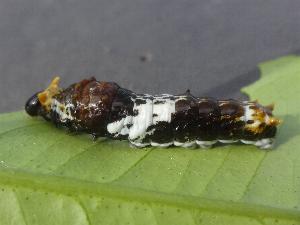
early instar
(Photo: copyright of Stewart Newman, Norfolk Island)

| Norfolk Swallowtail (one synonym is Papilio abstrusus Butler, [1876]) PAPILIONIDAE, PAPILIONOIDEA | (donherbisonevans@yahoo.com) and Stella Crossley & Stewart Newman |

early instar
(Photo: copyright of Stewart Newman, Norfolk Island)
The early instars of caterpillars of this species are black with white patches. They, like later instars, evert a pair of yellow fleshy horns from behind the head if they feel threatened.

Later instars become green with black markings and brown patches, with a white line along each side above the legs.
The Caterpillars feed on the foliage of various members of the RUTACEAE plant family including the Australian native :
and the introduced :
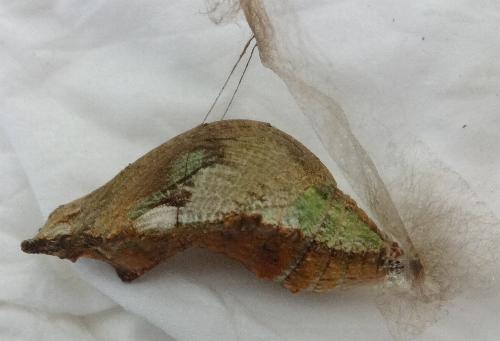
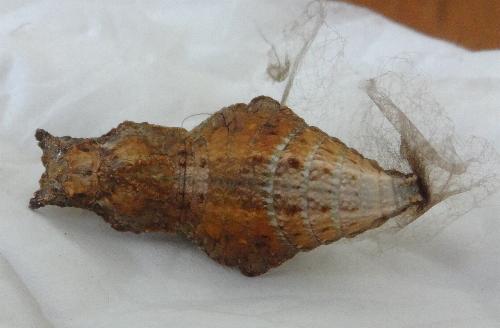
pupa
(Photos: copyright of Stewart Newman, Norfolk Island)
The pupa is brown with two short horns on the head and a bulbous middle. It is attached, head up, to a stem of the foodplant by a cremaster and girdle.
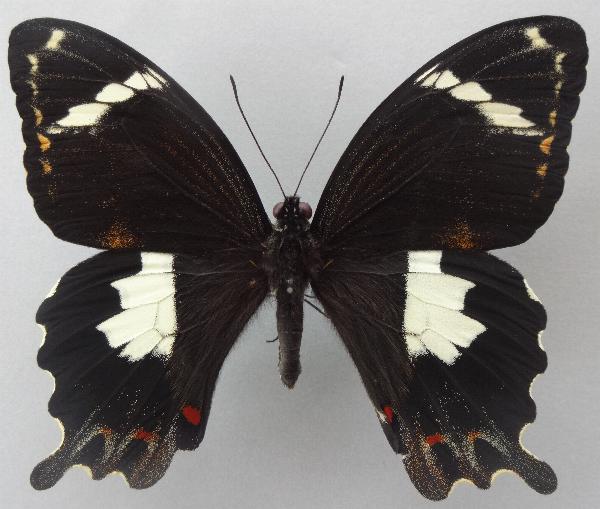
The male adults have black forewings, each with white spot at the wingtip, and a wide white band across the wingtip. The hindwings have scalloped margins, and are also black, each with a large white area in the middle, one or more small red spots near the middle of the hind-margin, and a lobed tail near the tornus.

The females have brownish shading in the white markings. Both sexes have a wingspan of about 9 cms.
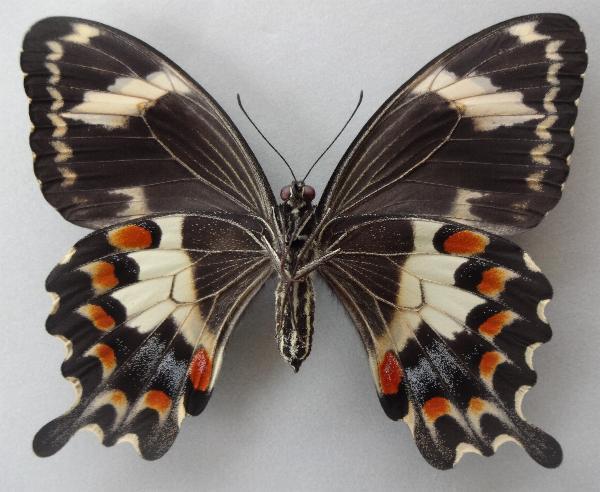
The underside of the forewing has an extra white submarginal arc. The undersides of the hindwings have an extra submarginal arc of red spots.
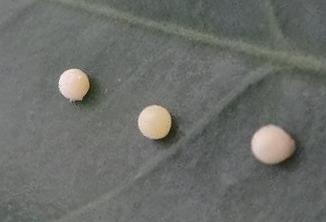
The eggs are white and spherical with a diameter of about 1 mm. They are laid singly on the underside of a foodplant leaf.
The species occurs in
and as the subspecies
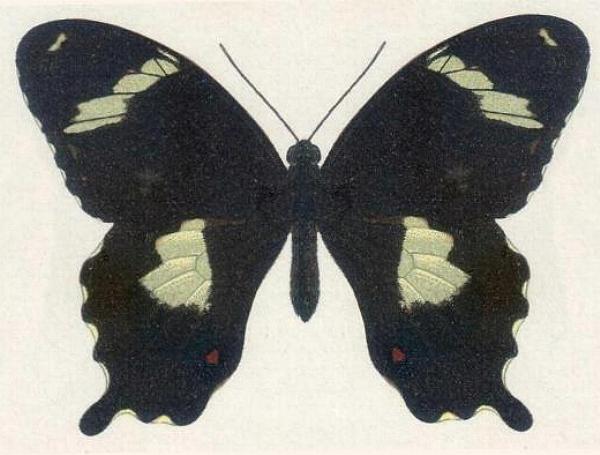
Further reading :
Jean-Baptiste Alphonse Dechauffour de Boisduval,
Bulletins Trimestriels de la Société Entomologique de France,
Series 3, Part 7 (1859) pp. CLIV-CLV, No. 3.
Michael F. Braby,
The Complete Field Guide to Butterflies of Australia,
CSIRO Publishing, Melbourne 2008.
Baron Cajetan & Rudolf Felder,
Species Lepidopterorum hucusque descriptae vel iconibus expressae in seriem systematicam digestae,
Verhandlungen der Zoologisch-Botanischen Gesellschaft in Wien,
Volume 14 (1864), p. 321, Nos. 424, 425.
Karl Jordan,
Diurna, Papilio,
in: Adalbert Seitz ed.,
Die Gross-Schmetterlinge der Erde,
Volume 9a, Section III, Part 1 (ca. 1927), p. 58 and also
Plate 27, Fig. c4.
Trevor Lambkin,
Under the Microscope,,
Butterflies and Other Invertebrates Club,
Metamorphosis Australia,
Issue 92 (March 2019), p. 23.
 caterpillar |  butterflies |  Lepidoptera |  moths |  caterpillar |
(written 13 October 2021, updated 17 August 2024)